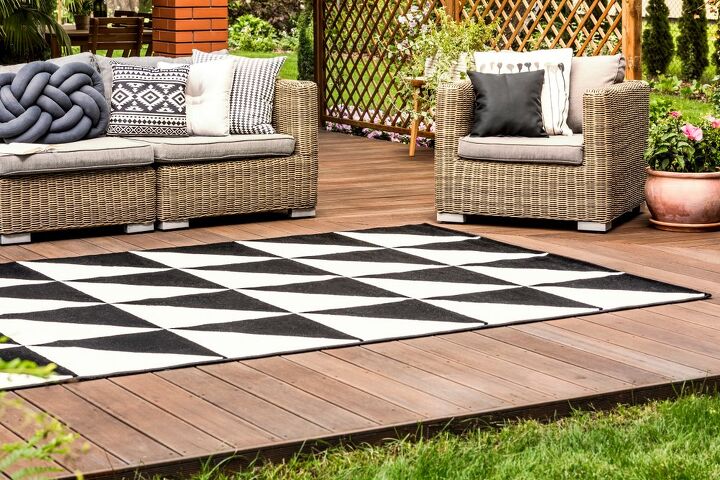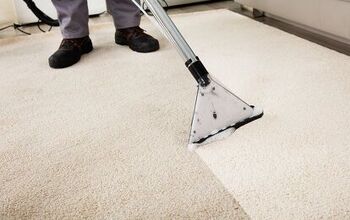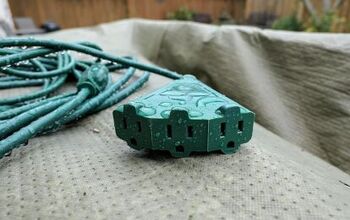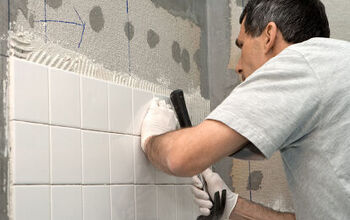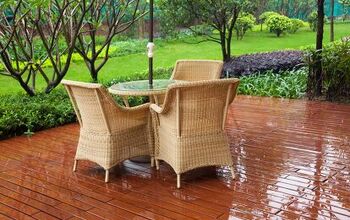Can Indoor-Outdoor Carpet Get Wet? (Find Out Now!)

Hearing about indoor-outdoor carpeting was an amazing game-changer for me. This is carpeting that can be used both inside and outside. It’s made to be more resilient to mud, pets, and other stuff that tends to ruin the type of carpeting I have. Of course, I’m still “green” to this type of carpeting. Up until recently, I wasn’t even sure if indoor-outdoor carpeting can get wet.
Though all indoor-outdoor carpets are made to be mold and mildew-resistant, whether or not it can get wet depends on the backing. To be able to tolerate moisture, you will need to have marine carpet backing. This backing is what makes your indoor-outdoor carpet suitable for wet environments. Otherwise, you’ll see mold sooner rather than later.
Finding out that indoor-outdoor carpeting doesn’t always work well with water was a bit of a shock to me. Curious about what this carpeting means for your home? Let’s talk about it.
Do You Need a Carpet or Rug Cleaning Service?
Get free, zero-commitment quotes from pro contractors near you.

What Is Indoor-Outdoor Carpeting?
Indoor-outdoor carpeting is a special type of carpeting that’s not entirely capable of living up to its name. Yes, it’s more rugged. Yes, you can use it in both indoor and outdoor settings. However, it generally still has limitations as to what it can stand. All indoor-outdoor carpeting is going to be mold and mildew-resistant. It also is meant to be easier to clean and less absorbent than typical carpeting.
Where Can You Use Indoor-Outdoor Carpeting?
The resistance to mold and mildew is what makes a more appropriate carpet for a porch or deck. It’s also pretty easy to deal with when it comes to mud. So, it also can work in a mud room or entryway fairly well. Obviously, if you want to do your entire living room up in this material, you can. It’d just be a bit strange, that’s all.
Can Indoor-Outdoor Carpets Get Stained From Water?
Indoor-outdoor carpets generally won’t get stained from being hit with water. This is especially true if it’s a one-off situation. However, they still can get stains from mold and they won’t handle oil spills well. If your carpet gets hit with oil, it will probably get a serious stain that’ll be hard to remove.
Most stains on indoor-outdoor carpets can be removed by spraying them with a 50/50 solution of vinegar and water. Then, you can work out the stain by dabbing away at it. The vinegar will dissolve and sanitize most stains that actively catch onto your carpeting. Professional
How Can You Find Indoor-Outdoor Carpeting That Can Get Wet?
With this type of carpeting, how much water resistance you get doesn’t really depend on the fibers. All fibers in indoor-outdoor carpets are going to be fairly similar in terms of mold and mildew. The real thing to watch for is backing. Most indoor-outdoor carpeting will have a wide range of backings, most of which have limited water resistance. In areas like patios or sunrooms, that’s fine.
However, it’s not fine for areas where flooding and rain are a frequent occurrence.
If you want to avoid having a ruined carpet in a watery area, the best backing that you can get for an indoor-outdoor carpet is marine backing. Marine backing is specially made for waterproofing. This leads to far fewer cases of mold and mildew. After all, it’s literally in the name. Marine. Water.
What Is The Best Type Of Carpet For Wet Environments?
If you live in an area where rain and snow are commonplace, then you might not want to go for an indoor-outdoor carpet. Even if you get marine backing, there’s still a fair chance that you’ll get mold if it’s wet too frequently. A better option would be to get outdoor carpeting. As the name suggests, this is strictly made for outdoor use.
Outdoor carpets are capable of handling snow, rain, sleet, hail, and just about every other type of moisture out there. They are also waterproof, which means that the chances of seeing mold and mildew are pretty slim. While they might not have as many styles or as many different materials as an indoor-outdoor carpet, they still offer a pop of style.
How Can You Prevent Mold On Indoor-Outdoor Carpets?
Along with getting carpeting with marine backing, the best thing you can do to prevent mold on your carpets is to limit water exposure. This means using this type of carpet in areas that are not normally exposed to too much water, such as patios. If your carpet gets wet, try to make sure it gets dry as soon as possible. Prolonged exposure can and will cause mold in most carpets.
Do You Need a Carpet or Rug Cleaning Service?
Get free, zero-commitment quotes from pro contractors near you.

Related Questions
What are most outdoor carpets made from?
Though they used to be made from woven straw and plant matter, the truth is that most outdoor carpets today are synthetic. This means that they are often made with waterproof polyester or polyurethane. This is part of the reason why outdoor carpets don’t catch mold the way that indoor-outdoor carpets do.
What is the best material for an indoor-outdoor rug?
If you want to get the most resilience against the elements without sacrificing feel, then you should take a look at polypropylene carpeting. This carpeting regularly gets cited as the most durable of its type. Polypropylene is also noted for being easy to clean and affordable. So, no matter how you look at it, you will get a pretty good deal on this material.
How long does indoor-outdoor carpeting last outside?
If you get top-of-the-line carpeting, then you’re in for a treat. Indoor-outdoor rugs can last as much as 15 to 25 years if they are properly maintained and in an environment that works with them. With that said, most people who have these types of rugs in wet areas should expect them to last for a total of five to 15 years, depending on how much exposure they have to the elements.

Ossiana Tepfenhart is an expert writer, focusing on interior design and general home tips. Writing is her life, and it's what she does best. Her interests include art and real estate investments.
More by Ossiana Tepfenhart



